Top Rankings
Jerome Joint School District ranks among the top 20% of public school district in Idaho for:
Category
Attribute
Diversity
Most diverse schools (Top 1%)
Community Size
Largest student body (number of students) (Top 1%)
For the 2025 school year, there is 1 public preschool serving 646 students in Jerome Joint School District. This district's average pre testing ranking is 1/10, which is in the bottom 50% of public pre schools in Idaho.
Public Preschool in Jerome Joint School District have an average math proficiency score of 22% (versus the Idaho public pre school average of 47%), and reading proficiency score of 22% (versus the 53% statewide average).
Minority enrollment is 61% of the student body (majority Hispanic), which is more than the Idaho public preschool average of 28% (majority Hispanic).
Overview
This School District
This State (ID)
# Schools
8 Schools
327 Schools
# Students
4,078 Students
119,739 Students
# Teachers
220 Teachers
6,842 Teachers
Student : Teacher Ratio
19:1
19:1
District Rank
Jerome Joint School District, which is ranked within the bottom 50% of all 172 school districts in Idaho (based off of combined math and reading proficiency testing data) for the 2021-2022 school year.
The school district's graduation rate of 63% has decreased from 79% over five school years.
Overall District Rank
#157 out of 173 school districts
(Bottom 50%)
(Bottom 50%)
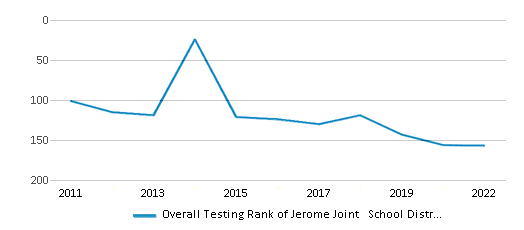
Math Test Scores (% Proficient)
23%
42%
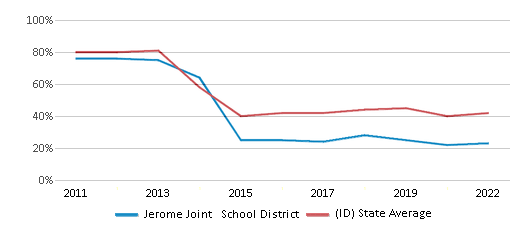
Reading/Language Arts Test Scores (% Proficient)
34%
55%

Science Test Scores (% Proficient)
26%
41%
Graduation Rate
63%
80%

Students by Ethnicity:
Diversity Score
0.51
0.44
# American Indian Students
16 Students
1,197 Students
% American Indian Students
n/a
1%
# Asian Students
11 Students
1,310 Students
% Asian Students
n/a
1%
# Hispanic Students
2,376 Students
24,515 Students
% Hispanic Students
58%
21%
# Black Students
17 Students
1,615 Students
% Black Students
1%
1%
# White Students
1,627 Students
86,517 Students
% White Students
40%
72%
# Hawaiian Students
8 Students
409 Students
% Hawaiian Students
n/a
n/a
# Two or more races Students
23 Students
4,176 Students
% of Two or more races Students
1%
4%
Students by Grade:
# Students in PK Grade:
72
4,101
# Students in K Grade:
285
15,927
# Students in 1st Grade:
269
17,353
# Students in 2nd Grade:
315
18,047
# Students in 3rd Grade:
311
17,683
# Students in 4th Grade:
300
17,263
# Students in 5th Grade:
315
16,475
# Students in 6th Grade:
325
6,296
# Students in 7th Grade:
312
1,739
# Students in 8th Grade:
343
1,592
# Students in 9th Grade:
320
899
# Students in 10th Grade:
341
834
# Students in 11th Grade:
271
808
# Students in 12th Grade:
299
722
# Ungraded Students:
-
-
District Revenue and Spending
The revenue/student of $9,790 in this school district is less than the state median of $10,185. The school district revenue/student has stayed relatively flat over four school years.
The school district's spending/student of $9,487 is higher than the state median of $9,364. The school district spending/student has stayed relatively flat over four school years.
Total Revenue
$40 MM
$3,215 MM

Spending
$39 MM
$2,956 MM
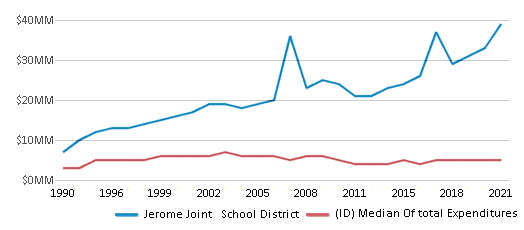
Revenue / Student
$9,790
$10,185
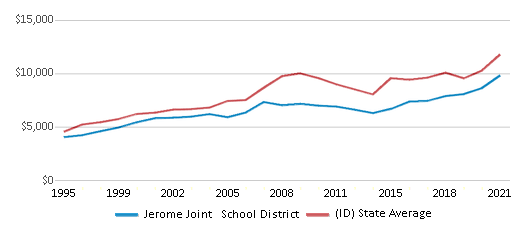
Spending / Student
$9,487
$9,364
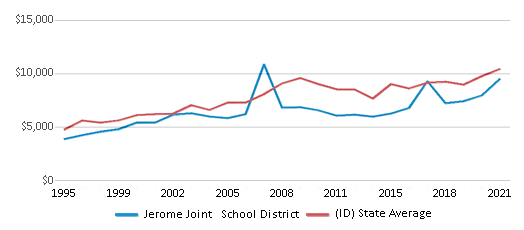
Best Jerome Joint School District Public Preschools (2025)
School
(Math and Reading Proficiency)
(Math and Reading Proficiency)
Location
Grades
Students
Rank: #11.
Horizon Elementary School
(Math: 20-24% | Reading: 20-24%)
Rank:
Rank:
1/
Bottom 50%10
934 10th Avenue East
Jerome, ID 83338
(208) 324-2015
Jerome, ID 83338
(208) 324-2015
Grades: PK-3
| 646 students
Recent Articles

Year-Round Or Traditional Schedule?
Which is more appropriate for your child? A year-round attendance schedule or traditional schedule? We look at the pros and cons.

Why You Should Encourage Your Child to Join a Sports Team
Participating in team sports has a great many benefits for children, there is no doubt. In this article you will learn what those benefits are.

White Students are Now the Minority in U.S. Public Schools
Increasing birth rates among immigrant families from Asia and Central and South America, combined with lower birth rates among white families, means that for the first time in history, public school students in the United States are majority-minority. This shift in demographics poses difficulties for schools as they work to accommodate children of varying language abilities and socio-economic backgrounds.





